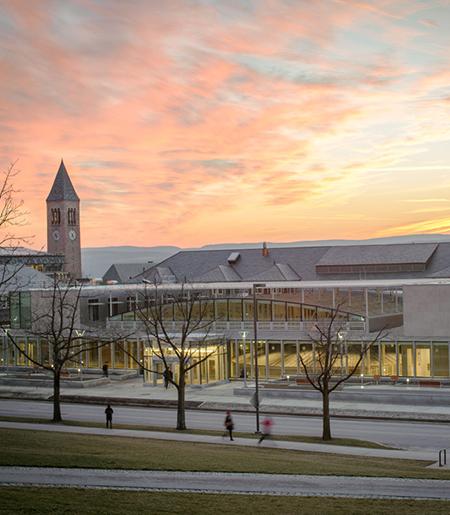Overview
Chris Fromme is an Associate Professor in the Weill Institute for Cell and Molecular Biology and the Department of Molecular Biology and Genetics. After graduating from Cornell with a B.A. in Biology in 1999, Chris did his graduate studies with Greg Verdine at Harvard University, receiving a Ph.D. in Biochemistry in 2004. He then did postdoctoral work as a Miller Institute Fellow with Randy Schekman at UC Berkeley, where he began his work on protein trafficking and membrane transport. He joined the Cornell faculty in 2008.
Research Focus
The Golgi complex is the “Grand Central Station” within our cells, serving as the primary sorting organelle at the nexus of the secretory and endocytic trafficking pathways. For example, virtually all proteins that eukaryotic cells display on their surface at the plasma membrane are first synthesized at the endoplasmic reticulum and then trafficked to the Golgi complex. Once at the Golgi, proteins find themselves at a crossroads: they may be trafficked to the plasma membrane, to endocytic organelles, to lysosomal organelles, back to the endoplasmic reticulum, or they may remain within the Golgi complex. We view the Golgi as an excellent model for investigating how decisions are made at the level of an organelle: How does the Golgi maintain homeostasis in the face of constant flux? How does the Golgi respond to changes in cargo load? Does the Golgi communicate with other organelles?
The regulators for all incoming and outgoing Golgi traffic are GTPases of the Rab and Arf families. Arf and Rab proteins are activated by GEFs (guanine nucleotide exchange factors), which are master regulators of trafficking pathways. Despite knowing the identity of many of these regulators, the molecular and atomic basis for their regulation remains poorly defined.
Our lab discovered that Arf activation is regulated at the Golgi through GEF autoinhibition, positive feedback, and GTPase crosstalk mechanisms. Our findings lead to a model for regulation of the Golgi in which multiple GTPases pathways, previously considered to act in isolation, are intimately connected. This model is powerful because it enables us to answer questions within a GEF-centric framework. By investigating how the GEFs are regulated using biochemical, structural, and cell biological approaches, we aim to uncover the molecular logic governing regulation of the Golgi at a mechanistic level.
